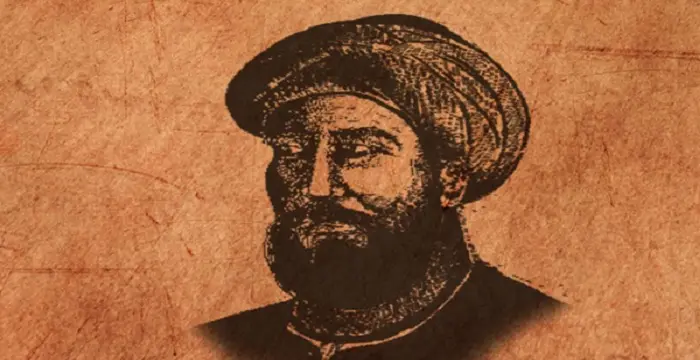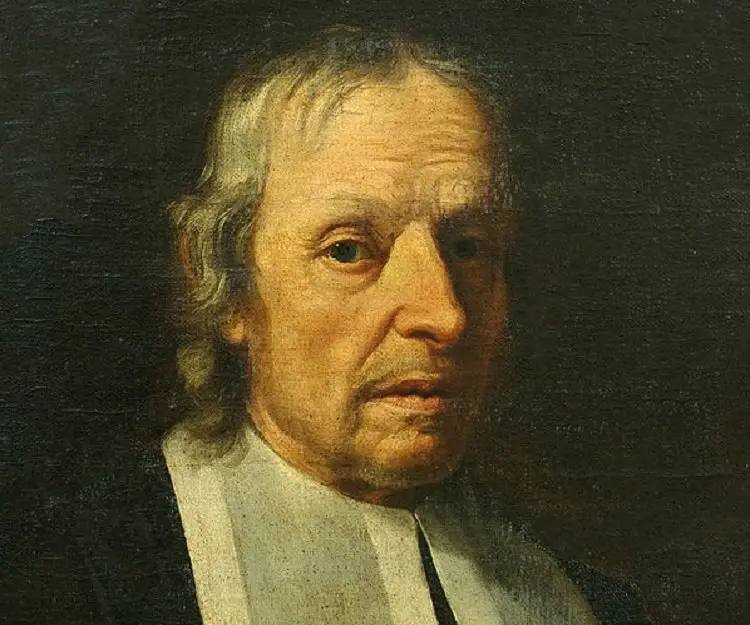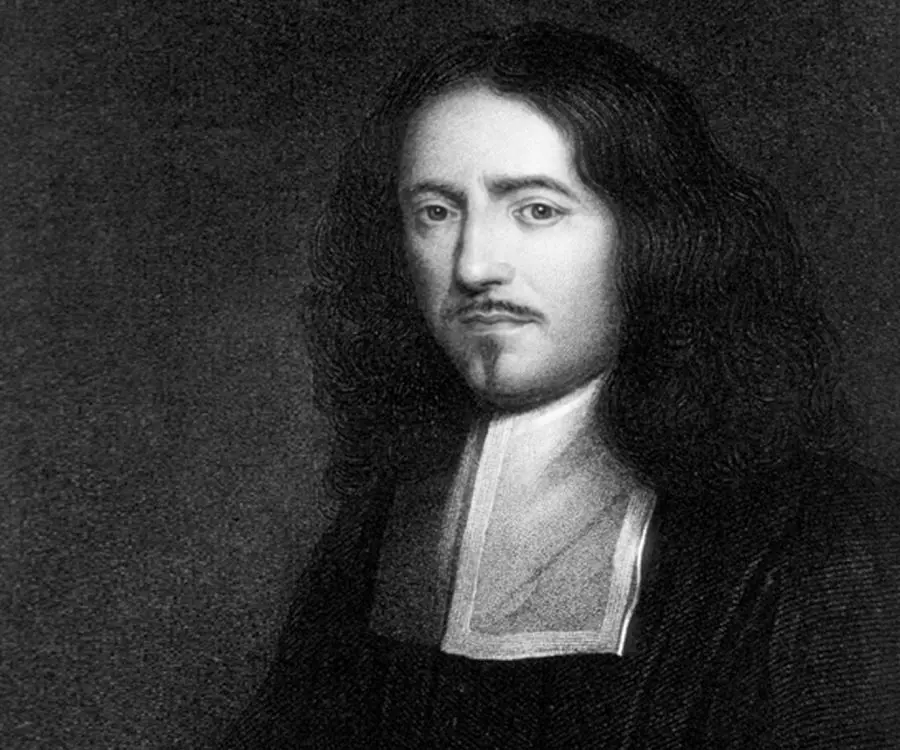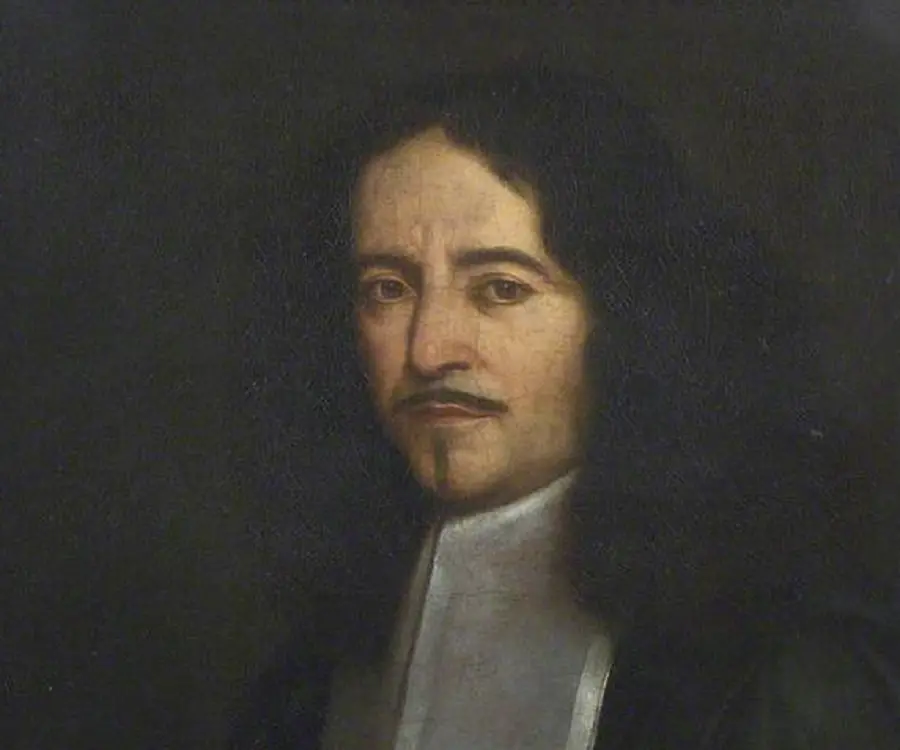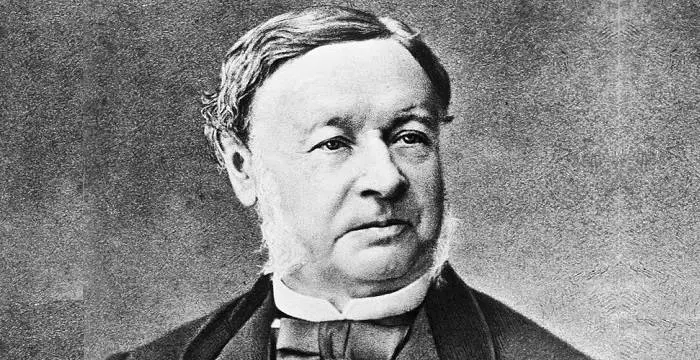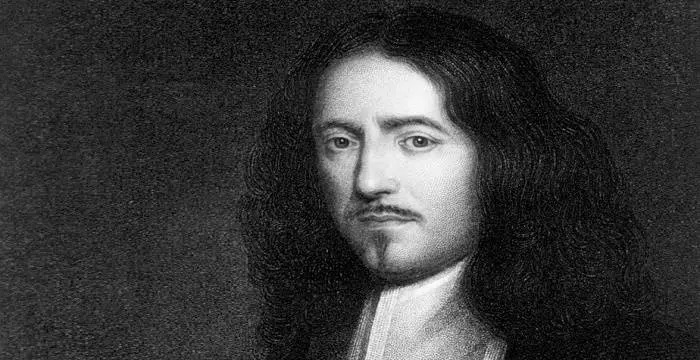
Marcello Malpighi - Physicians, Family and Childhood
Marcello Malpighi's Personal Details
Marcello Malpighi was a famous biologist who discovered the Red Blood Cells and is the eponym of the Malpighiaceae botanical family
| Information | Detail |
|---|---|
| Birthday | March 10, 1628 |
| Died on | September 30, 1694 |
| Nationality | Italian |
| Famous | Physicians, Scientists, Biologists |
| Spouses | Francesca Massari |
| Universities |
|
| Birth Place | Crevalcore |
| Religion | Catholicism |
| Gender | Male |
| Sun Sign | Pisces |
| Born in | Crevalcore |
| Famous as | Physician |
| Died at Age | 66 |
// Famous Physicians
Al-Zahrawi
Al-Zahrawi, was an illustrious medieval Arab Muslim physician and surgeon. Check out this biography to know about his childhood, family life, achievements and interesting facts about him.
Jabir Ibn Hayyan
Jabir Ibn Hayyan was a medieval era polymath. Check out this biography to know about his life, works and achievements.
Maria Montessori
Maria Montessori was a physician and educator who developed the approach of Montessori education. This biography of Maria Montessori provides detailed information about her childhood, life, achievements, works & timeline.
Marcello Malpighi's photo
Who is Marcello Malpighi?
Marcello Malpighi was a renowned Italian biologist who heralded a new era in the fields of anatomy and histology. As a child, Marcello was studious and he enrolled at the university as early as seventeen. Learning medicine under mentors like Bartolomeo Massari and Andrea Mariani, he honed his skills in anatomical studies. Despite the demise of his parents at an early age, this zealous student completed his studies and obtained two doctoral degrees. He started his academic career teaching logic but was soon offered a teaching position in Pisa where he taught theoretical medicine. He undertook anatomical studies of blood, which formed the foundation for one of his most important discoveries. Marcello’s skills in using the microscope, to decipher the structure of organisms and their parts with precision and accuracy, were unparalleled. He made various discoveries using the microscope to study the structure of specimens. Throughout his life, he was at the receiving end of his colleagues’ envy who were jealous of his growing reputation and success in scientific endeavours. Despite this he was ordained as the papal physician by the church in Rome and he spent his last years in the city. To know more about the life and works of this eminent scientist continue reading.
// Famous Biologists
Juliane Koepcke
Juliane Koepcke is a German-Peruvian biologist, who was the lone survivor among the 92 passengers and crew of the ill-fated LANSA Flight 508 that crashed in the Peruvian rainforest on 24 December 1971. Know more about her life in this biography.
Theodor Schwann
Theodor Schwann was a German physiologist who discovered the Schwann cells in the peripheral nervous system. This biography of Theodor Schwann provides detailed information about his childhood, life, achievements, works & timeline.
Norman Borlaug
Norman Borlaug was an American biologist known as the “Father of the Green Revolution”. This biography of Norman Borlaug provides detailed information about his childhood, life, achievements, works & timeline.
Childhood & Early Life
Marcello Malpighi was born to parents Marcantonio Malpighi and Maria Cremonini in the Papal State of Bologna, Italy on March 10, 1628.
He completed his early education from grammar school and pursued higher studies from the ‘University of Bologna’ when he was only seventeen, in 1646.
It was at the university that one of his teachers Francesco Natali realised Malpighi’s inclination towards medicine and encouraged him to pursue his goals. Thus in 1649, Marcello began his doctorate studies in medicine under the tutelage of mentors like Bartolomeo Massari and Andrea Mariani.
At the age of twenty-one, he lost both of his parents but he did not let the circumstances prove a hindrance in his educational pursuits. In 1653, the university awarded him doctoral degrees in philosophy and medicine.
Career
Malpighi then embarked on an academic career at the university in 1656 teaching logic to students but soon moved to Pisa where he was appointed as the chair of theoretical medicine.
At the ‘University of Pisa’, he garnered friendships with mathematician Giovanni Borelli who would introduce him to the ‘Accademia del Cimento’ which was a pioneering scientific society.
During his tenure at Pisa, he conducted studies on blood striving to answer the medical enigmas related to anatomy and physiology of living beings. However his stay at the university was cut short by poor health aggravated by the weather conditions in the Italian city.
Upon his return to his Alma matter the ‘University of Bologna’ he was appointed as lecturer in theoretical medicine, in 1659. Here he continued his research on microscopes conducting studies on anatomy.
In 1661, he made a breakthrough discovery when he successfully described the structure of capillaries which connected the arteries and capillaries. He also studied the structure of lungs in frogs and tortoise and described the function of alveoli or air sacs which allowed exchange of gasses during respiration.
His findings were not received well by his colleagues who despised Marcello because of his non-Bolognese ancestry. Vide a glowing recommendation from mathematician and friend Giovanni Borelli, Malpighi was invited to the ‘University of Messina’ where he occupied the post of a professor in 1662.
Continuing with his scientific endeavours along with a successful career as an academician and physician, this inquiring mind deciphered the anatomy of taste buds, optic nerves and the fat reservoirs.
In 1666, this erudite biologist made an important discovery wherein he isolated the red blood cells for the first time and explained that the blood owed its colour to the RBC’s. Malpighi returned to ‘University of Bologna’, after his findings created resentment among his colleagues at Messina, in 1667. At Bologna, he published ‘De viscerum structura execitatio anatomica’ which included his findings related to the anatomy of organs such as brain, kidney, spleen, bones and liver.
He also used his skills in microscopic studies to view the layers beneath the epidermal tissue in the skin. Various layers he helped identify are named after this pioneering scientist.
Marcello’s pioneering work garnered the attention of several eminent scientific communities, including the ‘Royal Society of London’. Since 1668, his findings were published in the journal managed by the Royal Society titled ‘Philosophical Transactions’.
He was the first ever Italian to receive a nomination to the Royal Society as a ‘Foreign Member’, in 1669. Also in the same year he studied the various stages in the life cycle of a silkworm and other insect larvae.
Continuing his research on reproduction of living beings, he studied in detail the developmental stages of an embryo in a chick. He identified the somites, aortic arches and neural folds in the bird, in 1673.
Between the years 1675-79, he used microscopic techniques to study cellular level organization in various specimens of flora and fauna. He deduced an analogy between the distribution and location of cells in plants and animals.
Marcello witnessed a rising opposition against him towards the latter years of his life. Such was the extent of criticism that his house was set on fire and his publications and instruments used for conducting research were trashed.
Pope Innocent XII ordained this eminent biologist as a papal physician in 1691and Marcello served as a royal physician until his death.
Major Works
Marcello was hailed as father of modern anatomy owing to his numerous contributions in the field. ‘De polypo cordis’ published in 1666, which included his studies of the mechanism by which blood clots and the discovery of RBC’s was a milestone discovery in the field of anatomy.
Personal Life & Legacy
Malpighi spent his last days in the service of Pope Innocent XII as his physician. Suffering from apoplexy, he breathed his last on November 30, 1694 at the age of 66.
Various anatomical structures in the human excretory system such as the ‘Malpighian Corpuscles’ found in the nephron and Malpighian tubules found in the excretory tract of insects are named after this pioneering scientist
// Famous Scientists
Juliane Koepcke
Juliane Koepcke is a German-Peruvian biologist, who was the lone survivor among the 92 passengers and crew of the ill-fated LANSA Flight 508 that crashed in the Peruvian rainforest on 24 December 1971. Know more about her life in this biography.
Henry Cavendish
Henry Cavendish was a theoretical chemist and physicist, renowned for discovery of hydrogen and calculation of the mass of earth. To know more about his childhood, profile, timeline and career read on
Konstantin Tsiolkovsky
Konstantin Tsiolkovsky was a Russian rocket scientist and a pioneer of astronautics. This biography provides detailed information about his childhood, family, personal life, career, achievements, etc.
Marcello Malpighi biography timelines
- // 10th Mar 1628Marcello Malpighi was born to parents Marcantonio Malpighi and Maria Cremonini in the Papal State of Bologna, Italy on March 10, 1628.
- // 1646He completed his early education from grammar school and pursued higher studies from the ‘University of Bologna’ when he was only seventeen, in 1646.
- // 1649It was at the university that one of his teachers Francesco Natali realised Malpighi’s inclination towards medicine and encouraged him to pursue his goals. Thus in 1649, Marcello began his doctorate studies in medicine under the tutelage of mentors like Bartolomeo Massari and Andrea Mariani.
- // 1653At the age of twenty-one, he lost both of his parents but he did not let the circumstances prove a hindrance in his educational pursuits. In 1653, the university awarded him doctoral degrees in philosophy and medicine.
- // 1656Malpighi then embarked on an academic career at the university in 1656 teaching logic to students but soon moved to Pisa where he was appointed as the chair of theoretical medicine.
- // 1659Upon his return to his Alma matter the ‘University of Bologna’ he was appointed as lecturer in theoretical medicine, in 1659. Here he continued his research on microscopes conducting studies on anatomy.
- // 1661In 1661, he made a breakthrough discovery when he successfully described the structure of capillaries which connected the arteries and capillaries. He also studied the structure of lungs in frogs and tortoise and described the function of alveoli or air sacs which allowed exchange of gasses during respiration.
- // 1662His findings were not received well by his colleagues who despised Marcello because of his non-Bolognese ancestry. Vide a glowing recommendation from mathematician and friend Giovanni Borelli, Malpighi was invited to the ‘University of Messina’ where he occupied the post of a professor in 1662.
- // 1666 To 1667In 1666, this erudite biologist made an important discovery wherein he isolated the red blood cells for the first time and explained that the blood owed its colour to the RBC’s. Malpighi returned to ‘University of Bologna’, after his findings created resentment among his colleagues at Messina, in 1667. At Bologna, he published ‘De viscerum structura execitatio anatomica’ which included his findings related to the anatomy of organs such as brain, kidney, spleen, bones and liver.
- // 1666Marcello was hailed as father of modern anatomy owing to his numerous contributions in the field. ‘De polypo cordis’ published in 1666, which included his studies of the mechanism by which blood clots and the discovery of RBC’s was a milestone discovery in the field of anatomy.
- // 1668Marcello’s pioneering work garnered the attention of several eminent scientific communities, including the ‘Royal Society of London’. Since 1668, his findings were published in the journal managed by the Royal Society titled ‘Philosophical Transactions’.
- // 1669He was the first ever Italian to receive a nomination to the Royal Society as a ‘Foreign Member’, in 1669. Also in the same year he studied the various stages in the life cycle of a silkworm and other insect larvae.
- // 1673Continuing his research on reproduction of living beings, he studied in detail the developmental stages of an embryo in a chick. He identified the somites, aortic arches and neural folds in the bird, in 1673.
- // 1675 To 1679Between the years 1675-79, he used microscopic techniques to study cellular level organization in various specimens of flora and fauna. He deduced an analogy between the distribution and location of cells in plants and animals.
- // 30th Nov 1694Malpighi spent his last days in the service of Pope Innocent XII as his physician. Suffering from apoplexy, he breathed his last on November 30, 1694 at the age of 66.
// Famous Pisces Celebrities peoples
Christine Baumgartner
Christine Baumgartner is an American model and the wife of famous American actor Kevin Costner. Check out this biography to know about her birthday, childhood, family life, achievements and fun facts about her.
Galina Becker
Galina Becker is a former athlete and fitness model from America. Check out this biography to know about her birthday, childhood, family life, achievements and fun facts about her.
Nikkie De Jager
Check out all that you wanted to know about Nikkie De Jager, the famous Dutch Makeup artist; her birthday, her family and personal life, her boyfriends, fun trivia facts and more.
Annie Bakes
Annie Bakes is an American adult model and the ex-wife of Dennis Rodman. Check out this biography to know about her birthday, childhood, family life, achievements and fun facts about her.
Jordyn Jones
Jordyn Jones is an American dancer. Let’s have a look at her family & personal life including age, date of birth, boyfriends, net worth, and fun facts.
Oscar Rosenstroem
Oscar Rosenstroem is a Danish Musical.ly star. Let’s have a look at his family and personal life including age, date of birth, girlfriends, net worth and fun facts.
Marcello Malpighi's FAQ
What is Marcello Malpighi birthday?
Marcello Malpighi was born at 1628-03-10
When was Marcello Malpighi died?
Marcello Malpighi was died at 1694-09-30
Where was Marcello Malpighi died?
Marcello Malpighi was died in Rome
Which age was Marcello Malpighi died?
Marcello Malpighi was died at age 66
Where is Marcello Malpighi's birth place?
Marcello Malpighi was born in Crevalcore
What is Marcello Malpighi nationalities?
Marcello Malpighi's nationalities is Italian
Who is Marcello Malpighi spouses?
Marcello Malpighi's spouses is Francesca Massari
What was Marcello Malpighi universities?
Marcello Malpighi studied at University of Bologna
What is Marcello Malpighi's religion?
Marcello Malpighi's religion is Catholicism
What is Marcello Malpighi's sun sign?
Marcello Malpighi is Pisces
How famous is Marcello Malpighi?
Marcello Malpighi is famouse as Physician
